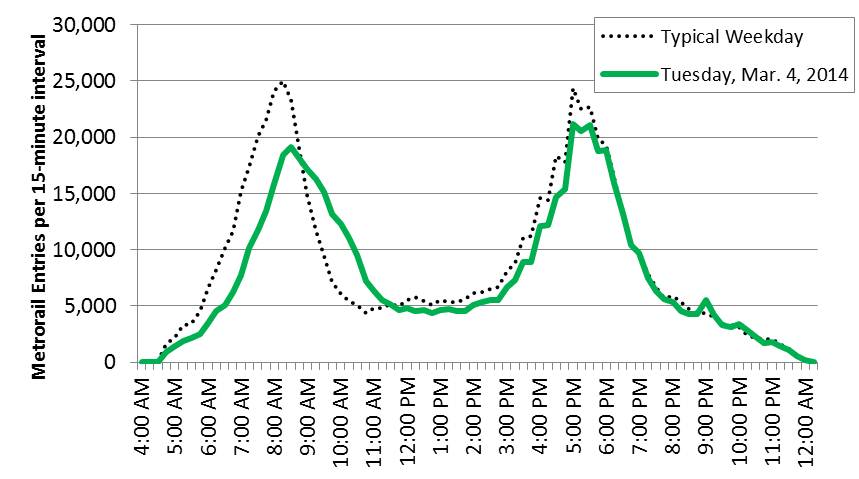Yesterday’s Metrorail Ridership: Recovering from a Snowstorm
Yesterday, as everyone recovered from a snowstorm, here’s what happened to Metrorail ridership.
After Monday’s snowstorm, yesterday the federal government in the Washington region issued a two-hour delayed opening, and many schools opened with a delay or remained closed. Metrobus began the morning operating on a snow emergency plan, but by afternoon had restored full service. Here’s what that meant to Metrorail ridership:

Metrorail ridership on Tuesday, when the federal government and many schools opened with a 2-hour delay.
Note: the prior Thursday (Feb. 27, 2014) stands in as a typical weekday above, for comparison.
It looks as if the apex of the AM peak period occurred 15 minutes later than usual. Many riders appeared to delay travel in the morning, resulting in a much more gradual end to the morning peak.
How was your commute different on March 4?
This data is available for download (.xlsx, 13kb).


This doesn’t relate to the snow, but I’ve noticed something of a stairstep effect in the upward slope of PM rush demand on this post and some earlier ones (like https://planitmetro.com/2014/02/13/the-impact-of-government-shutdowns-on-metrorail-ridership-budget-vs-snow/).
Do you all have any thoughts about why that might be? Perhaps it’s a bunch of mini-peaks of people deciding to leave work on the half-hour?
Hi, Peter.
We’ve noticed the stairstep effect ourselves and investigated it quite a bit. From our assessment, this is a valid and accurate description of ridership. I think you’re right: for PM peak entries, it’s likely people all getting off work at the same time. For some stations we see a similar pattern in the AM Peak which could be people all leaving their houses at the same time, or people transferring from buses en masse.
Thanks!